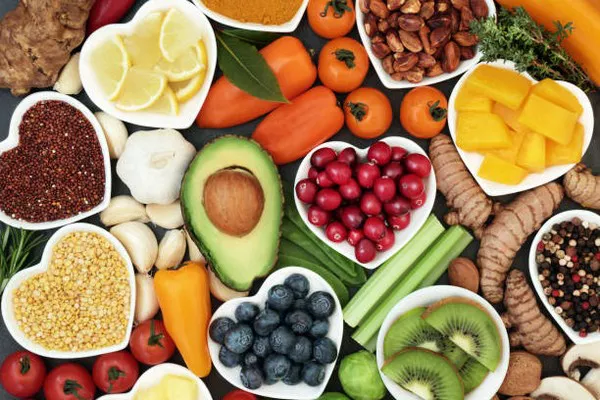As we age, our metabolism naturally slows down. This is especially true for those over 50. Understanding how to boost metabolism is key to maintaining a healthy weight and overall wellness. This article will explore various strategies that can help increase metabolism after 50, focusing on diet, exercise, and lifestyle changes.
Understanding Metabolism
Metabolism refers to the chemical processes in the body that convert food into energy. It includes two main processes:
- Catabolism: This is the breakdown of food into smaller molecules to produce energy.
- Anabolism: This involves the use of energy to build and repair tissues.
As we age, muscle mass tends to decrease, and fat mass may increase. This change affects our metabolic rate. A slower metabolism can lead to weight gain if we do not adjust our dietary habits and activity levels.
Why Metabolism Slows Down
Several factors contribute to a slower metabolism after 50:
Muscle Loss: After age 30, we can lose about 3-8% of muscle mass per decade. Less muscle means a lower resting metabolic rate (RMR).
Hormonal Changes: Changes in hormones, such as decreased levels of testosterone and estrogen, can also affect metabolism.
Decreased Activity: Many people become less active as they age, leading to fewer calories burned.
Dietary Changes: Eating fewer calories can lead to a slower metabolism over time. The body adapts to lower calorie intake by conserving energy.
Diet Strategies to Boost Metabolism
1. Eat Enough Protein
Increasing protein intake is one of the most effective ways to boost metabolism. Protein has a higher thermic effect than fats or carbohydrates. This means the body uses more energy to digest protein.
Sources of Protein: Include lean meats, fish, eggs, dairy, legumes, and nuts. Aim for 20-30 grams of protein in each meal.
2. Stay Hydrated
Drinking water can temporarily boost metabolism. Studies show that drinking about 500 ml of water can increase metabolic rate by 30% for about 30-40 minutes.
Hydration Tips: Aim for at least eight glasses of water per day. Herbal teas and clear soups can also help.
3. Incorporate Spicy Foods
Spices like chili peppers contain capsaicin, which can temporarily boost metabolism. Incorporating spicy foods into meals can increase energy expenditure.
Cooking Tip: Add spices to your dishes to not only enhance flavor but also increase metabolism.
4. Eat Smaller, Frequent Meals
Instead of three large meals, consider having five to six smaller meals throughout the day. This can help keep metabolism active.
Meal Planning: Include a source of protein, healthy fats, and carbohydrates in each meal.
5. Don’t Skip Breakfast
Breakfast kick-starts your metabolism after a night of fasting. Eating a balanced breakfast can help maintain energy levels throughout the day.
Healthy Breakfast Ideas: Consider oatmeal with fruits and nuts or scrambled eggs with vegetables.
Exercise for Metabolic Boost
1. Strength Training
Building muscle mass is one of the most effective ways to increase metabolism. Strength training helps increase muscle mass, which in turn raises the metabolic rate.
Workout Recommendations: Aim for at least two days of strength training per week, focusing on major muscle groups.
2. High-Intensity Interval Training (HIIT)
HIIT workouts involve short bursts of intense exercise followed by rest. This type of training can increase metabolism for hours after the workout.
Example HIIT Routine: Alternate between 30 seconds of sprinting and 1 minute of walking for 15-20 minutes.
3. Stay Active Throughout the Day
Incorporating more movement into your day can also help boost metabolism. Simple activities like walking, gardening, or even standing while working can make a difference.
Activity Suggestions: Take the stairs instead of the elevator, park farther away, or take short walking breaks during the day.
4. Include Cardiovascular Exercise
Aerobic exercise is essential for overall health and can help boost metabolism as well. Aim for at least 150 minutes of moderate aerobic activity each week.
Cardio Activities: Walking, cycling, swimming, or dancing can all be effective.
See Also: Is It Best To Eat Carbs After Workout
Lifestyle Changes to Enhance Metabolism
1. Get Enough Sleep
Poor sleep can negatively impact metabolism. Aim for 7-9 hours of quality sleep each night.
Sleep Tips: Establish a bedtime routine, keep the bedroom cool and dark, and limit screen time before bed.
2. Manage Stress
Chronic stress can lead to hormonal changes that slow metabolism. Practice stress management techniques such as yoga, meditation, or deep breathing exercises.
Stress Relief Techniques: Try mindfulness meditation or gentle yoga to help reduce stress levels.
3. Avoid Crash Diets
Extreme dieting can lead to muscle loss and a slower metabolism. Focus on balanced eating rather than drastic calorie cuts.
Balanced Eating Approach: Aim for a well-rounded diet that includes a variety of food groups.
4. Consider Supplementation Wisely
Some supplements may help boost metabolism, but it’s essential to consult with a healthcare provider before starting any new supplements.
Potential Supplements: Green tea extract, protein powder, and vitamin D may have benefits, but individual needs vary.
Monitoring Your Progress
To see how your metabolism changes with these strategies, consider tracking your progress. Keep a journal of your meals, exercise, and how you feel. Adjust your approach as needed.
1. Use a Food Diary
Recording your meals can help identify patterns in eating habits and areas for improvement.
2. Measure Body Composition
Instead of just tracking weight, consider measuring body fat percentage and muscle mass to get a clearer picture of your health.
3. Set Realistic Goals
Aim for gradual changes rather than drastic ones. Setting small, achievable goals can help maintain motivation.
Conclusion
Increasing metabolism after 50 is possible with the right approach. By focusing on diet, exercise, and lifestyle changes, you can boost your metabolism and maintain a healthy weight. Remember to be patient and consistent, as these changes take time. With dedication, you can enhance your metabolism and enjoy a healthier, more active life.
Related Topic:
How Much Protein After Workout Weight Loss


